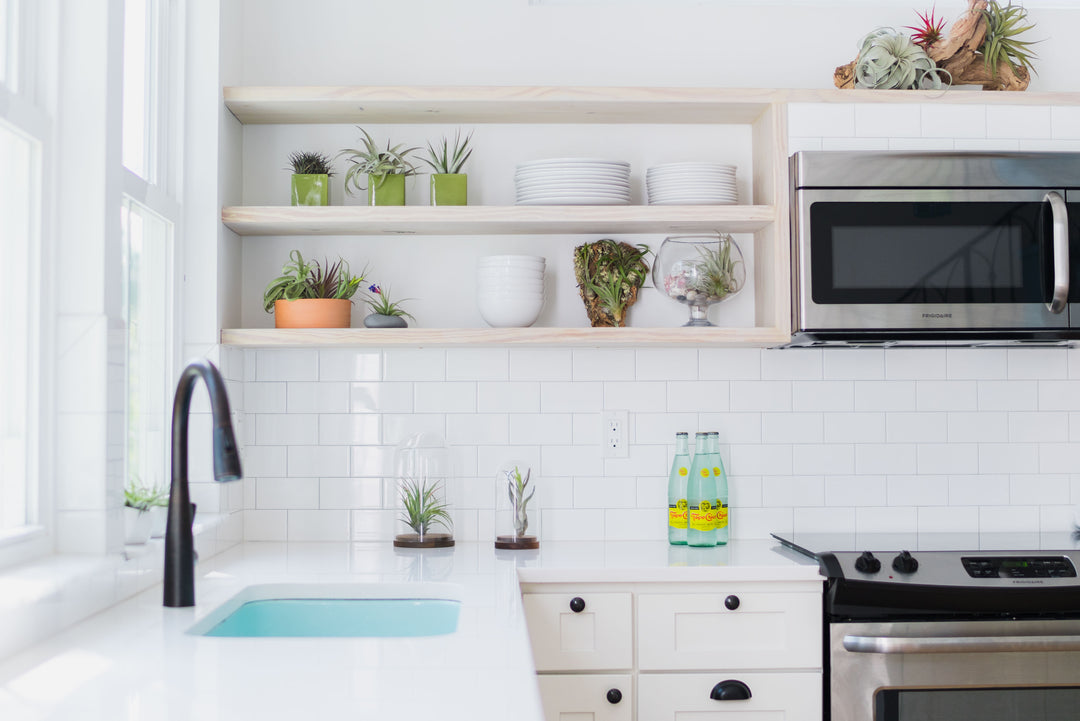
Air Plant Pollination & Reproduction
Plants get pollinated and so do the air plants. You're probably wondering how this works for them. Well, in the rainforests they’re pollinated by birds, wind, and insects that come in contact with them. They can also self-pollinate, which is when there's a transfer of pollen from the stamen of a plant to its stigma.
In the tropical rainforests, bees, night moths, hummingbirds, and ants (generally referred to as pollinators) play the role of cross-pollinating an air plant with another of the same species during movement or feeding. This turns out quite helpful for the “self-incompatible’ Tillandsia species (T. caput-medusae and T. streptophylla) that can’t self-pollinate.
Today, we have hybrids of Tillandsia that have been exquisitely created through the cross-pollination of two different species by hybridizers. For example, T. Redy is a hybrid of T. Streptophylla X T. Concolor (developed by Mark Dimmitt) and T. John Arden's Art, a hybrid of T. intermedia X .T. capitata marron (developed by John Arden). Quite interesting, don’t you think?
After blooming, the cycle of life for the air plants continues and there's the production of seeds and offsets/pups as a result. For seed pods to be formed, the flowers need to be pollinated else your plants just end up growing offsets/pups alone. Hence, you shouldn't worry about pollinating your air plants as they don’t need it to grow pups.
Some air plants produce only one pup and some can produce up to ten pups. In some air plants species, the adult plant would produce a few generations of pups/offsets before dying, however many air plants species will bloom just once and hence, have just one generation of seeds or offsets/pups.
Flowers have generally adapted to possess bright colors and scents for attracting pollinators such as bees or hummingbirds to them. Besides species like the T. Diaguitensis, T. duratii, T. straminea and some others, most air plants lack scents but still make up for this with their bright colored flowers that come in handy in attracting pollinators to them.
Want to know if your air plants got pollinated? Simple, you’d notice seed pods forming in place of the flowers after blooming. These seed pods contain Tillandsia seeds encased in fluffy hairs that are known as COMA or parachute. Over time (which might be between three months to about two years), the seed pods would develop and the walls of the pod would split and release the seeds as a result. The COMA is designed to travel just like a parachute gliding through the air. Since they’re hairy and the hairs are very coarse, they’d find it easy to attach themselves to new plants, trees or rocks and start germinating in their new location.
In the wild, air plants produce seeds before the rainy season and would need to stay wet so as to start germinating and could die off in drought periods.
A lot of patience and prudence is needed when it comes to growing air plants from seed stage, so enjoy the journey.














Hi there. I am a long time grower of many different plants here in central florida and I just have to say, the information on your site is amazing and very much appreciated. Not many sites out there give the correct information when it comes to these amazing plants! I’m excited to get some little seeds from mine. I believe I see one flower that pollinated for the first time, so I’m excited!
Leave a comment